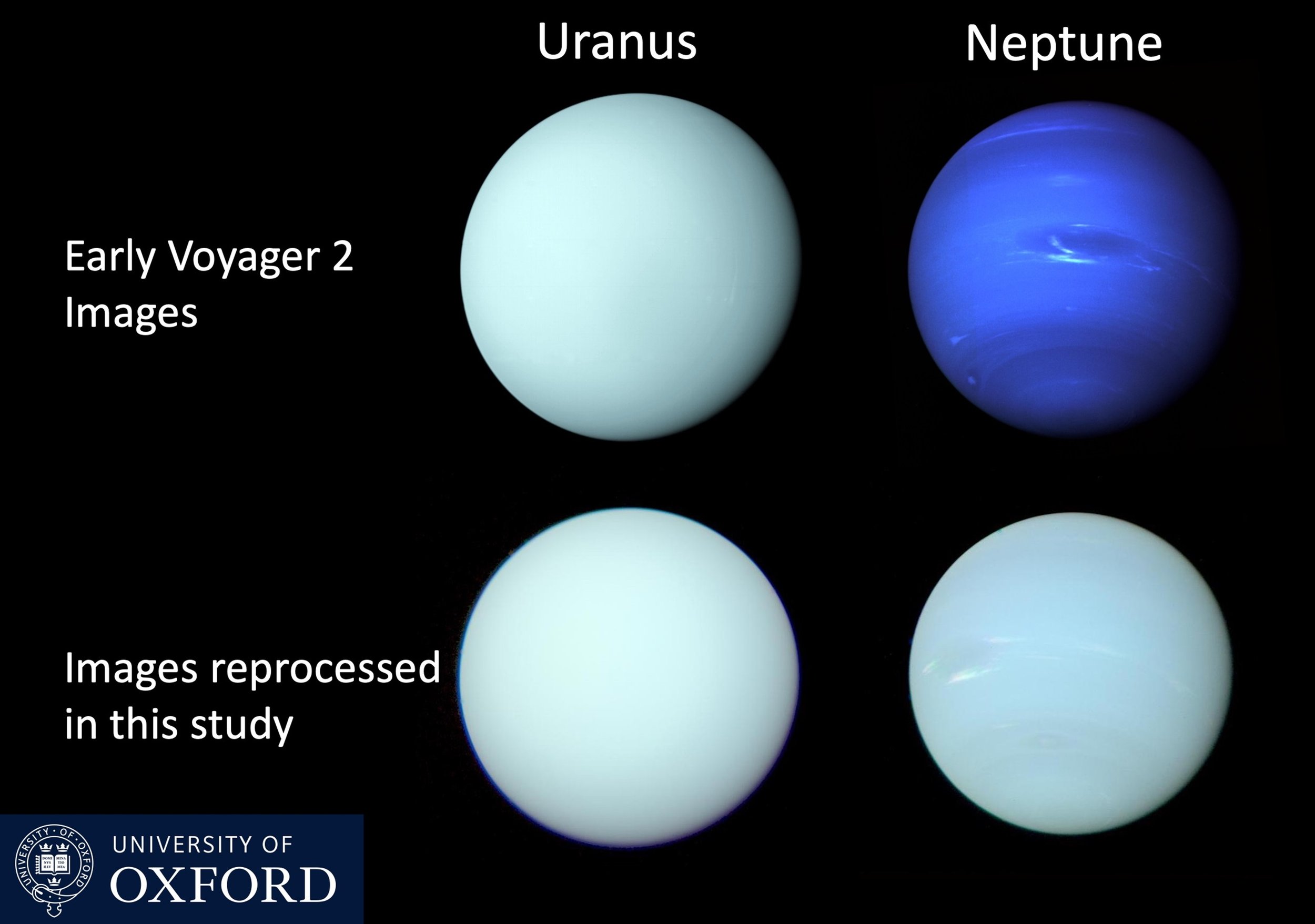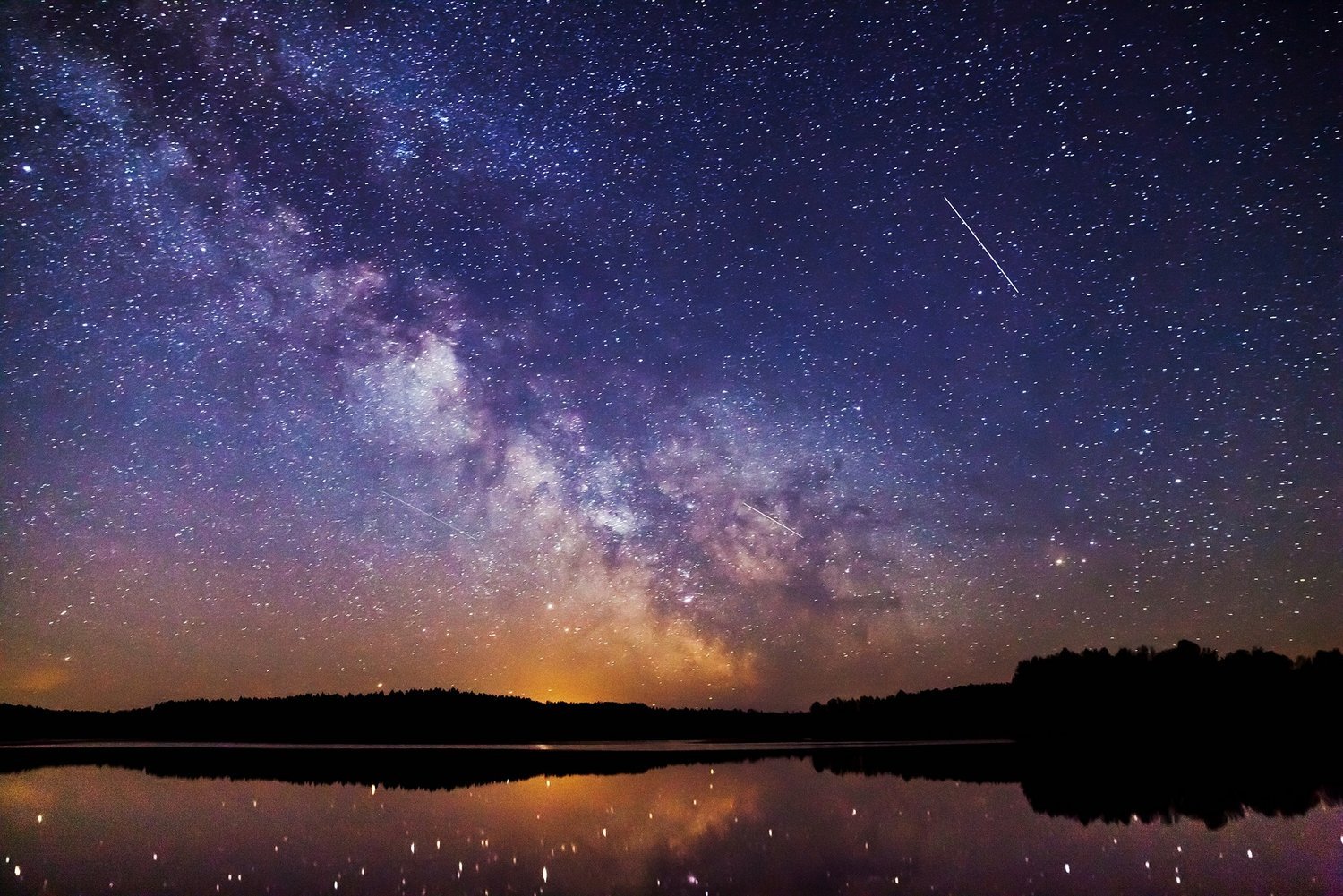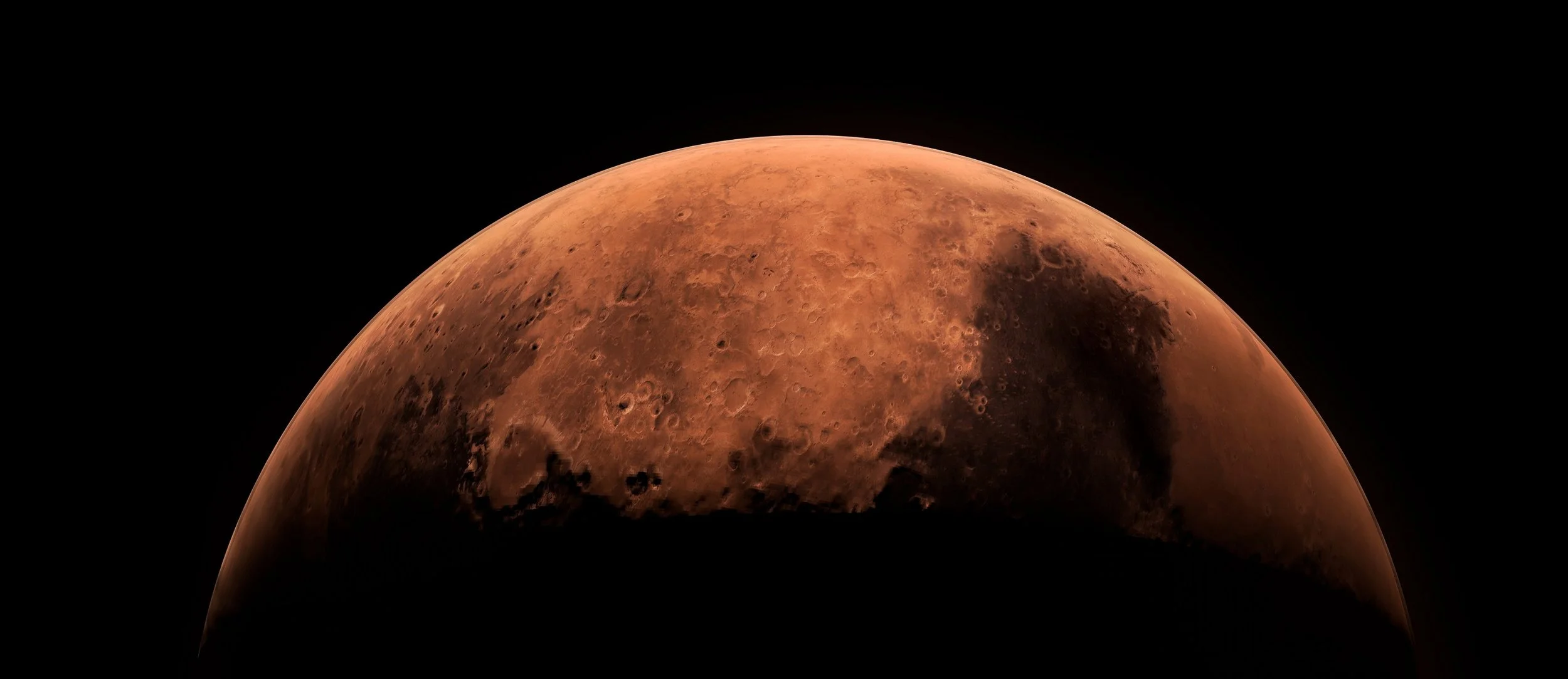New research led by Professor Patrick Irwin from the University of Oxford, published in the Monthly Notices of the Royal Astronomical Society, has revealed unique insights about the colors of Neptune and Uranus.
Contrary to popular belief, the study indicates that both planets exhibit a similar hue of greenish blue. This finding challenges the long-held perception that Neptune is a deep azure while Uranus appears pale cyan.
In this article, we'll dive a little further into what is going on.
The image presents a comparison between the original Voyager 2/ISS photos of Uranus and Neptune from the 1986 and 1989 flybys, and their reprocessed versions from this study, aimed at accurately representing the planets' true color - (Image Credit: Patrick Irwin)
Historically, the true colors of these planets were misrepresented due to the limitations of imaging technology.
Images from the 20th century, including those by NASA's Voyager 2 mission, often used separate color captures that were later merged, leading to inaccuracies. Specifically, Neptune's images were overly enhanced in blue, while early images from Voyager 2 displayed Neptune with increased contrast to highlight atmospheric features, further distorting its actual color.
Suggested article: From Neptune's blue hue to Jupiter's red spot: are the colors of the planets real? - (Universal-Sci)
An iconic picture of Neptune, taken by Voayger 2 just five days prior to its nearest encounter with the planet on August 25, 1989. - (Image Credit: NASA/JPL-Caltech)
The new Oxfort study used data from the Hubble Space Telescope's Space Telescope Imaging Spectrograph (STIS) and the European Southern Observatory's Very Large Telescope's Multi Unit Spectroscopic Explorer (MUSE). These instruments provided continuous color spectrums in each pixel, enabling a more accurate determination of the planets' true colors.
The researchers adjusted the composite color images from Voyager 2 and the Hubble Space Telescope's Wide Field Camera 3 (WFC3), leading to the discovery that Neptune is slightly bluer due to a thinner haze layer compared to Uranus.
Uranus’ Mysterious color variation
Additionally, the team addressed the mystery of Uranus' color variation during its 84-year orbit. Comparing historical brightness measurements from the Lowell Observatory with current images showed that Uranus appears greener during solstices and bluer during equinoxes. The researchers attribute this to Uranus's unique axial tilt and varying methane concentrations and icy haze in the polar regions
This animation shows the cyclical color variations on Uranus over the course of two Uranian years
To add some perspective: one Uranus year is 84.02 Earth years, running from 1900 to 2068
(Credit: Patrick Irwin, University of Oxford.)
The role of Methane ice particles
An intriguing aspect of Uranus, which was a key focus in the study, is its highly unusual spin. Unlike other planets, Uranus rotates almost on its side, causing its poles to point almost directly towards the Sun and Earth during solstices. This unique axial tilt significantly affects the planet's overall brightness as viewed from Earth, especially in the polar regions.
The researchers emphasized the importance of this tilt, noting that any changes in the reflectivity of the polar areas would substantially impact how bright Uranus appears from our vantage point. One of the challenges for astronomers has been understanding how and why this reflectivity varies.
To unravel this mystery, the team developed a model to compare the light spectra of Uranus's polar and equatorial regions. They discovered that the polar zones reflect more green and red wavelengths than blue. This is partly due to the varying concentration of methane, a gas that absorbs red light and is less abundant near the poles compared to the equator.
However, this difference in methane levels alone didn't fully account for the observed color changes. The researchers then introduced a new element into their model: a 'hood' of gradually thickening icy haze, which had been observed previously over the sunlit pole during the transition from equinox to solstice. This haze, likely composed of methane ice particles, contributes further to the increased reflection at green and red wavelengths in the polar regions.
Future Space Missions
The new research not only corrects misconceptions about the colors of Neptune and Uranus but also emphasizes the importance of Earth-based observations for understanding the dynamic seasonal changes of these distant planets. The findings also highlight the need for future space missions to further explore these intriguing ice giants.
Professor Fletcher stated that Earth-based studies like the one discussed today, will be important in placing the discoveries of future missions into their broader context.
If you are interested in more details about the underlying research, be sure to check out the article published in the Monthly Notices of the Royal Astronomical Society, listed below this article.
Sources and further reading:
From Neptune's blue hue to Jupiter's red spot: are the colours of the planets real? (Universal-Sci)
Modelling the seasonal cycle of Uranus's colour and magnitude, and comparison with Neptune (Monthly Notices of the Royal Astronomical Society)
The Voyager 2 mission (NASA Science)
Too busy to follow science news during the week? - Consider subscribing to our (free) newsletter - (Universal-Sci Weekly) - and get the 5 most interesting science articles of the week in your inbox
FEATURED ARTICLES:







The way you prepare your vegetables affects their nutritional value. What is the healthiest method to prepare them?